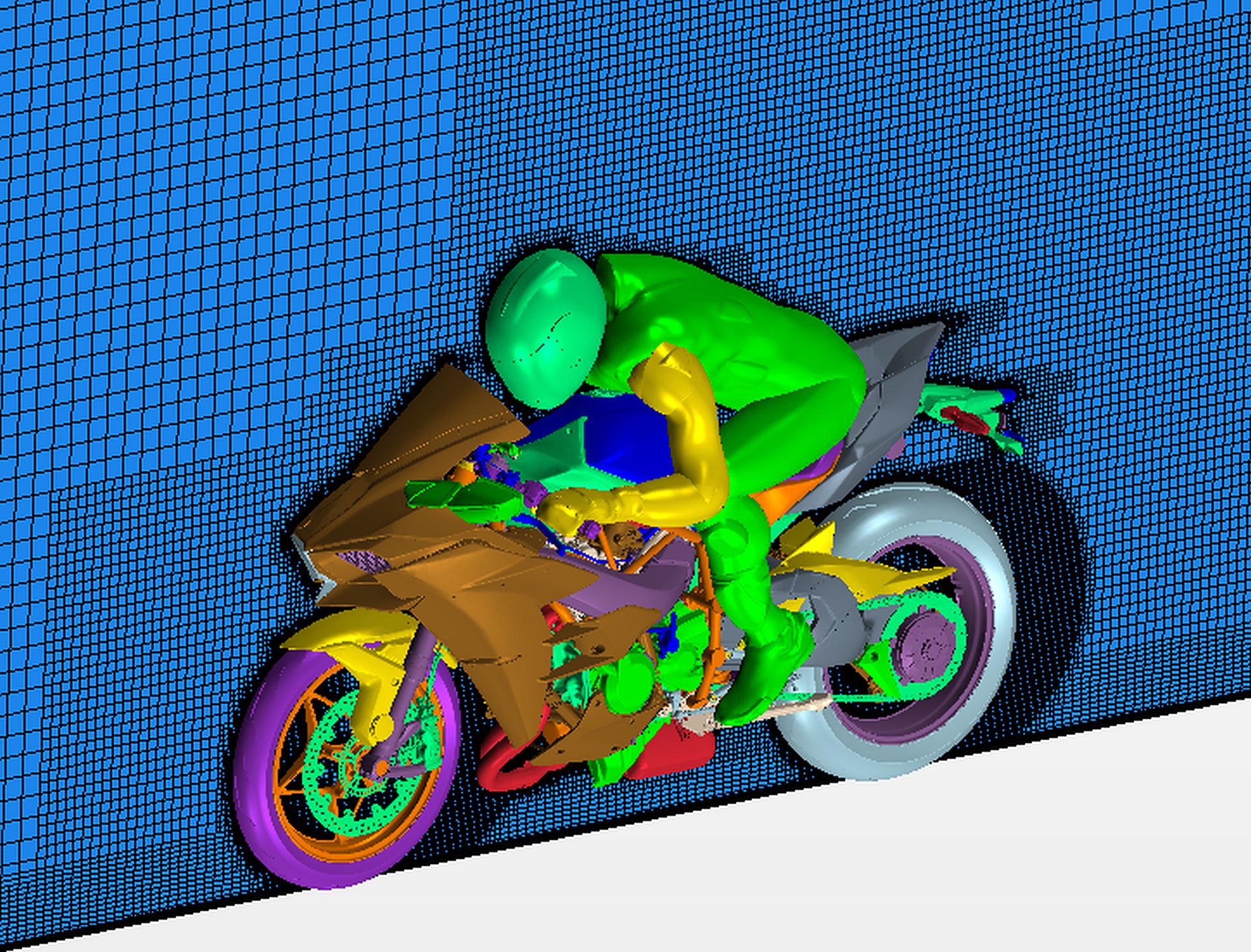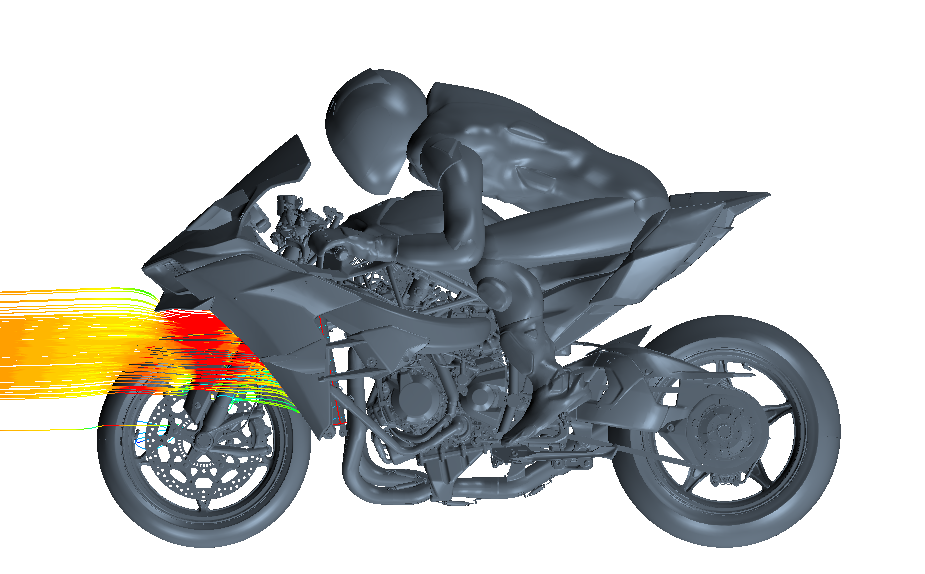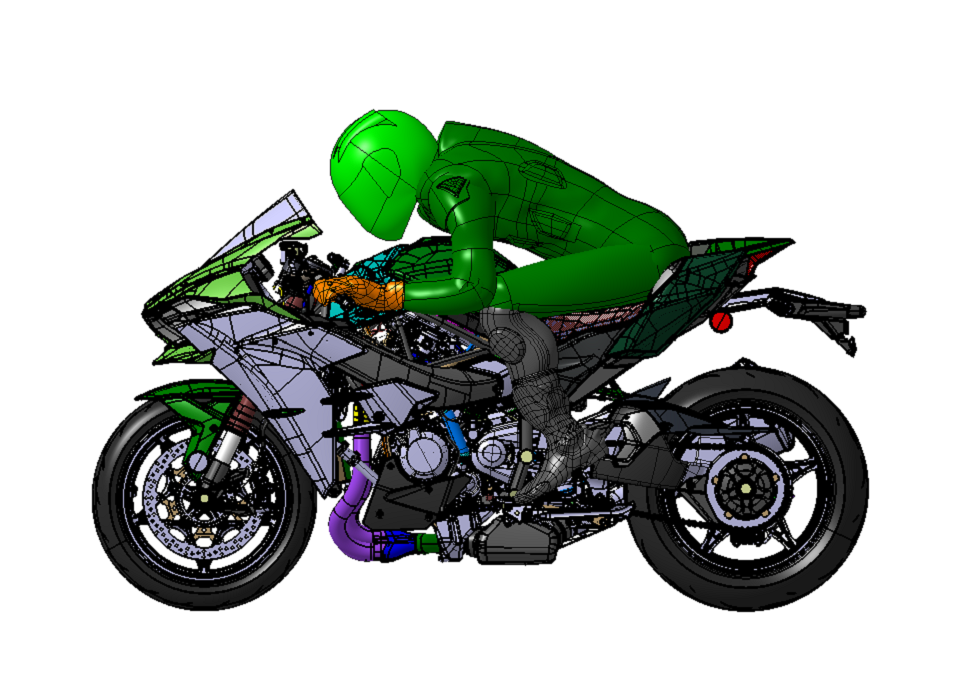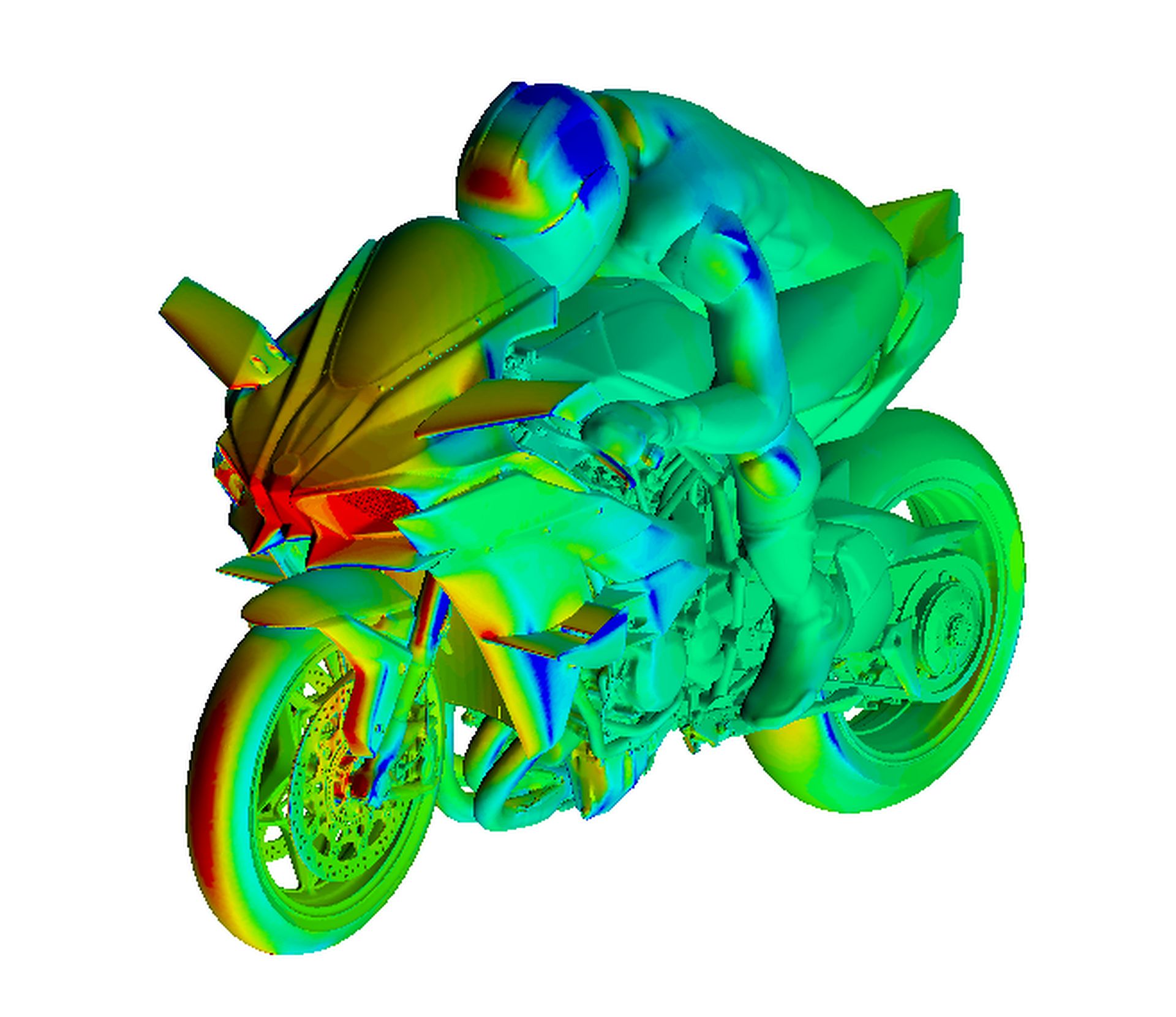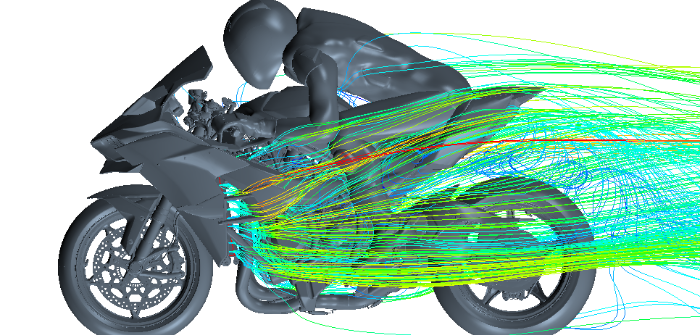Kawasaki selects Siemens PLM Software to develop motorcycle models
The Kawasaki Ninja H2 and H2R and motorcycles reflect the full breadth of Kawasaki technologies from across the company’s various groups. The Ninja H2 is certified for public roads while the Ninja H2R is designed exclusively for closed-course riding.
In addition to the Kawasaki Motorcycle and Engine Company (MC&E), the development of these machines enlisted the support of the Kawasaki Heavy Industries (KHI) Group Aerospace Company for the supply of aerodynamic devices, the Gas Turbine and Machinery Company for engine superchargers, and the Precision Machinery Company for welding expertise.
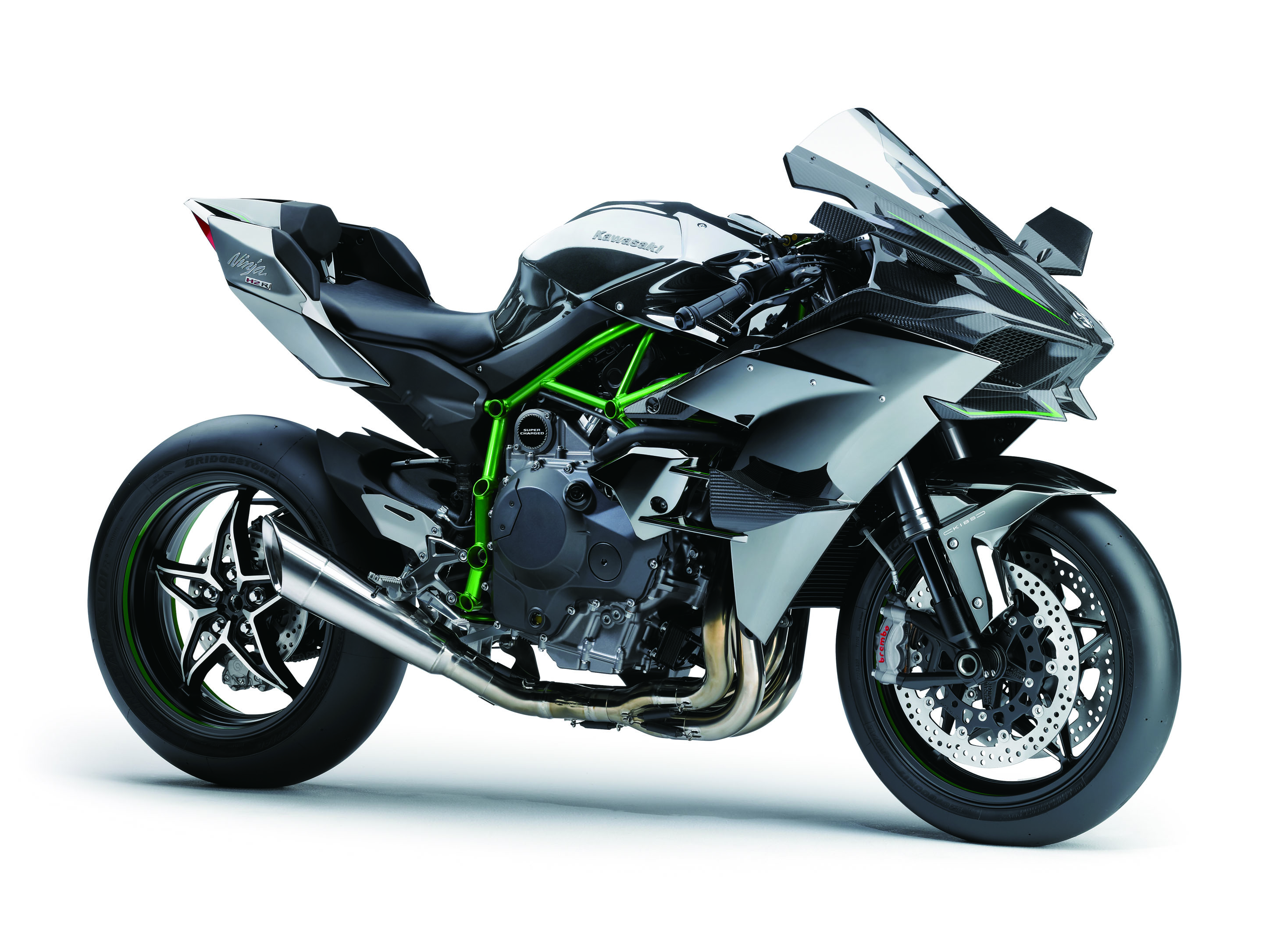 The Ninja H2R/H2 models are mounted with supercharger-assisted engines. The Ninja H2R is a ‘monster machine’ with an engine output of 321.4hp (at ram air pressure), giving rise to extremely high engine heat generation compared to previous models. Based on this, one principal design goal was to provide ample radiator ventilation flow to cool the engine.
The Ninja H2R/H2 models are mounted with supercharger-assisted engines. The Ninja H2R is a ‘monster machine’ with an engine output of 321.4hp (at ram air pressure), giving rise to extremely high engine heat generation compared to previous models. Based on this, one principal design goal was to provide ample radiator ventilation flow to cool the engine.
The motorcycles are the fastest from the Kawasaki stable, while also being extremely lightweight, leading to potential floating of the front wheel. Due to this, the key aerodynamic challenge was to lower lift on the front wheel. These two points were treated as key CFD themes as the development progressed.
Eiji Ihara, manager of the MC&E development and engineering division, says, “There is no significance in simply developing CFD technology without pursuing the critical need for application in actual product development.”
“The greatest bottleneck with CFD is the time factor. We used CFD in efforts prior to the Ninja H2R/H2 development as well, but it took so long to achieve functional models that we found it impossible to apply the technology in product development.”
Ihara continues, “That prompted exploration of a wide range of software options, eventually leading us to Simcenter STAR-CCM+ software. The moment I encountered Simcenter STAR-CCM+, I intuitively realized that it could do the job.”
The single greatest challenge in developing a new product is the considerable time required to get the concept to the model stage. In the Ninja development, the CFD simulation process took about one month, which proved to be too long in a rapidly evolving design process.
Kawasaki engineers launched an ambitious project to reduce the simulation turnaround time to less than a week, using a combination of automated surface-wrapping to clean up the CAD, and an automated Java macro to mesh and set up the simulation model.
With the VSim macro supplied by Siemens PLM software, all analysis settings and data were entered in a Microsoft Excel spreadsheet software that was read by Simcenter STAR-CCM+. The macro automated the entire process: CAD import, boundary organization, and boundary conditions; and preparing wind tunnel configurations, analysis, postprocessing settings, batch submissions and generating written reports using Microsoft PowerPoint presentation software.
By implementing this benchmarked process, MC&E also realized a turnaround time of one week, as well as output in only one-to-two days when geometry modifications were needed to address minor changes.
Manabu Morikawa, head of computational analysis at MC&E, says, “Now we can simulate several dozen cases in reduced time. Thanks to this, the number of prototypes being turned out has also been reduced, making an extremely valuable contribution to lowering cost and manhours. We feel that the application of Simcenter STAR-CCM+ has proved highly effective on this front as well.”
The streamlined, automated process ensured that even personnel with limited experience can perform the CFD analysis with ease. More recently, an in-house thermal management analysis evaluation macro has also been developed, enabling cuts in turnaround time for that work as well. Simulation results have been extensively validated using KHI’s wind-tunnel facility, which has demonstrated excellent correlation between testing and simulation of the overall motorcycle.
Motorcycles come in the conventional full cowling and naked types, with each offering its own benefits and issues. A full cowling offers improved airflow at the front of the radiator, but wind ventilation is poor since the cowling stretches over the back of the radiator. With a naked type motorcycle (no cowling), the ventilation at the rear of the radiator is excellent but is countered by the inability to collect air flow at the front of the radiator.
To develop these Ninja H2R/H2 models, a design capable of incorporating the benefits of both types was required. To address that need, Simcenter STAR-CCM+ simulations were used to identify a design capable of collecting wind at the front and enhancing ventilation out the back.
Specifically, different cowling configurations were analyzed numerically until the required flow volume was eventually obtained. Compared to the initial design, CFD results showed that cross ventilation was improved by approximately 40% in a configuration that satisfied the design demands.
The next phase comprised studies of aerodynamic devices that would lower front-wheel lift, an important design consideration for realizing safe driving on the Ninja H2R/H2. The KHI Group aerospace company used around 100 years of aerodynamic know-how to assist in analyzing multiple mirror configurations and other devices to help lower front wheel lift.
“Both of these areas were first-time challenges for KHI, and there is no doubt that without CFD on board, we would never have succeeded in the development,” says Ihara.
